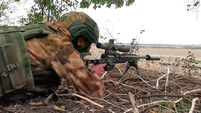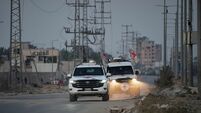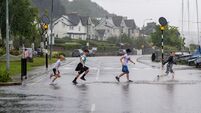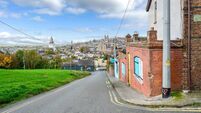Villagers defy warnings and return to volcano
Thousands of villagers defied warnings of a major eruption at one of Indonesia’s deadliest volcanos, leaving refugee centres today and returning to its slopes to tend to crops and animals.
Yesterday, up to 50,000 fled or were evacuated from villages close to Mount Kelud after the volcano was placed on the highest alert level, meaning scientists believe an eruption may be imminent.
The 5,679ft (1,731m) volcano, which has been showing signs of an eruption for several weeks, last blew its top in 1990, killing dozens. In 1919, a powerful explosion destroyed 100 villages and claimed 5,160 lives.
Despite the danger, local government official Sigit Rahardjo said most of those evacuated returned home today after complaining they had received no food and saying they must tend crops.
Witnesses saw scores of trucks loaded with people and thousands of motorbikes leaving temporary evacuation camps and heading back up the mountain.
“There was no food at all,” said Darmiashiah, a 33-year-old woman who returned to the village of Sugihwaras, well within in the evacuation zone.
“If I get told to leave again, I will not go,” said Darmiashiah, who goes by a single name.
Emergency co-ordinator Herry Noegroho promised more tents and food at refugee centres.
Unlike some volcanos, Mount Kelud does not smoke or rumble in the run-up to an eruption.
Scientists say the temperature of its crater-lake is rising quickly and they have logged hundreds of volcanic earthquakes triggered deep inside the mountain, both signs that an eruption may be imminent.
“It never shows its true nature,” said government volcanologist Surono, who also goes by a single name. “It is better to raise the status than see people killed.”
Kelud is on Java island, about 385 miles (620km) east of the capital, Jakarta.
Its explosive activity typically starts with a steam blast – when surfacing magma meets ground water. Such eruptions produce hot mud flows and pyroclastic surges and flows.
Indonesia has 400 volcanoes, of which around 150 are active.
Evacuation orders are often patchily enforced. Without compensating farmers for loses to crops or livestock, it is difficult to force them to leave their villages. Another worry for homeowners is thieves targeting empty properties.
Many people were heeding the warning, however.
“I can still remember the last eruption,” said 70-year-old Kasemi, who was staying in a government building with dozens of other people. “It went dark because of the ash and the explosions were terrifying.”
Indonesia sits on the so-called Pacific “Ring of Fire” – a series of volcanos and fault lines stretching from the Western Hemisphere through Japan and south-east Asia.














